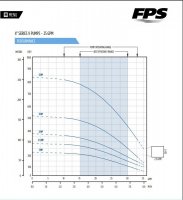Alan Waterman
Member
That is an interesting graph. It shows the tank to be filled in a few seconds, and to drain in a minute or so. I would like to see what the pressure gauge is doing in relation to this graph? I think you are running about 2 GPM and getting about 2 gallons out of the tank before the pump starts. When the pump starts it puts 2 gallons back in the tank in 10-20 seconds. This would mean the gauge on the tank only moves up and down by 1-2 PSI. That is what I would expect with an 80 gallon tank and the little mechanical switch with the rubber bell shaped cover.
The pump peaks quickly and then drops a bit, which is the 50% speed thing it does for a few seconds before shutting off completely. With a small tank the switch is made before the pump shuts off completely and it bounces like that 45 times a minute.
Also curios about the 14.7 rate during the time the pump is off? Is that the parasitic loss from the Monodrive?
Yes, the 14.7 watts is just the standby power of the controller.
At 50 psi, I get about 18 GPM from my 25 GPM pump when run continuously. At 40 PSI, it pumps out about 22 GPM. 0 psi, it's about 30 GPM at the well head with the water at 120 feet deep and the pump at 200 feet. There's a little bit of TDH from the friction of the pvc so it's slightly less than if the pump were higher right at the water level. The more TDH it has to go through, the less water it will pump at the same horsepower. Deeper water, more pipe, more bends, etc add to TDH. Working pressure and water depth are the two biggest contributors to TDH. I've tested many many scenarios at different flow rates and different amounts of TDH at various points in the system.
For the graph above with the master bedroom shower, it's 2.3 gallons in a 5 gallon bucket for each cycle. So the 8 seconds to fill up and the 56 to empty result in 2.3 gallons put back into the pressure tank in 8 seconds.

